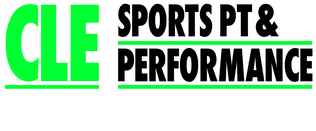Is hip pain keeping you from spinning, running or weight training? You aren’t alone. Nagging hip injuries affect 15% of the population. Hip pain is common in athletes, causing many to scale back on mileage or limit squats, lunges, or other strength training exercises. But if treated correctly, athletes can often return to full activity.
Here’s what to do to get back in the game:
1. What’s the source?
The hip joint is a pretty complicated structure. The joint itself is a “ball and socket” configuration of the head (“ball”) of the femur and the “socket” or pelvis (“acetabulum” if you want to get technical. But it’s Sunday morning. And I’m not sure about you, but I don’t use big words until I’ve had my coffee. Check back in an hour or so if you want real terminology). There’s a few very strong ligaments holding the joint in place, as well as a ton of tendons and muscles. There’s also extra stress on the hip joint from the joints above and below it (the spine and the knee).
That being said, hip pain can come from a number of things. There’s a lot going on from any of these structures at any given time. And to effectively treat the pain, it’s super important to know what’s causing it. You can leave the real diagnosis to us in the Sports Medicine community, but knowing where things hurt is the first step in managing your pain.
Which area hurts?
- Front of the hip? (Could be a tendonitis issue- hip flexor, sartorius, rectus femoris)
- Groin? (Could be a hip adductor tendonitis/strain; or less commonly hip impingement, hip labrum tear, or stress fracture)
- Side of the hip? (Could be greater trochanteric bursitis, tendonitis, or an IT band issue)
- Back of the hip/butt? (Could be a hamstring strain, or from an issue in the low back/pelvis)
- “C-sign” Is your pain in this area? Could be a sign of hip impingement
2. When does it hurt?
Try the following modifications. If pain worsens or doesn’t improve– see a Sports Physical Therapist or Physician
- Squatting? Try these changes for at least 2 weeks
- Decrease weight (duh…)
- Squat to no lower than a 60 degree angle (or whatever is pain-free)
- While squatting, sit back to a chair – don’t hyperextend your back, though (see below). Also, squeeze the glutes to better activate these muscles

- Try to limit the hyperextension in the low back – think “tuck your butt under”


- Use a band around the outside of the knees. This forces the hips to open a bit and better activates the muscles in the back/outside of the hips- which takes pressure off the joint.

- Substitute squatting for hip thrusts (check out my post here) to take stress off the hip while maintaining/building glute strength.
- Running or impact activities?
- Cross train- switch to non-impact activities for 1-2 weeks.
- Use a pool for swimming (caution with breastroke), running, or plyometrics.
- Try an elliptical or yoga.
- Be careful with cycling as a low seat angle may aggravate pain
- “Striding out” during a run? Try improving flexibility in the front of the hip and/or groin area with a foam roller, stick massage, or myo-release ball. Do this for 5 minutes, twice daily for 2 weeks or so.
3. Other considerations:
Some of these methods may help with pain. Talk to a Sports PT to see what is the best option for you
- Running gait analysis
- Running gait re-training
- Functional strength assessment and/or video analysis of biomechanics during weightlifting or CrossFit activities
- Core and hip stability training
- Biomechanical re-training
Questions about your hip pain? Discuss them with CLE Sports PT & Performance today to #getBETTER



You must be logged in to post a comment.